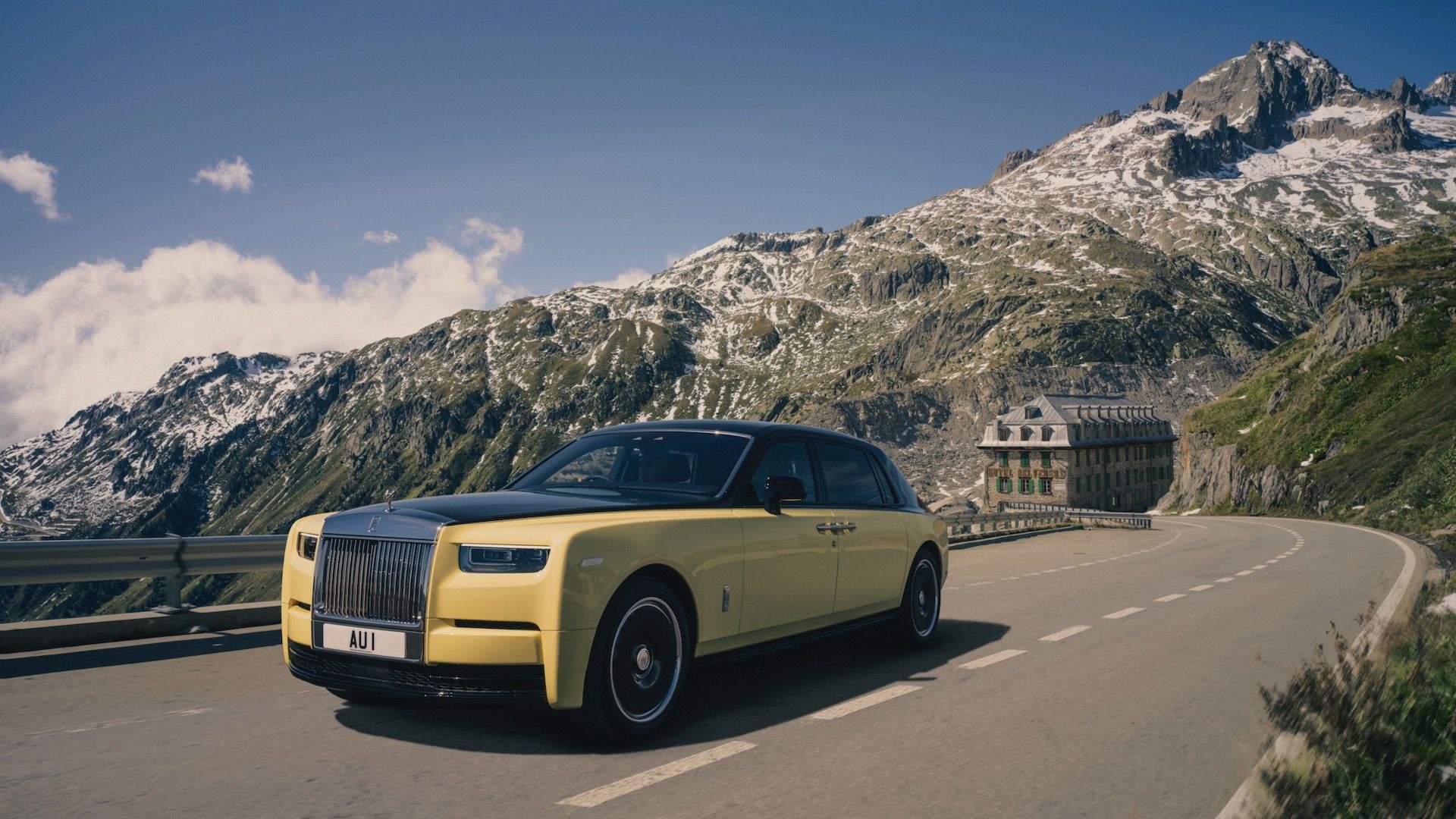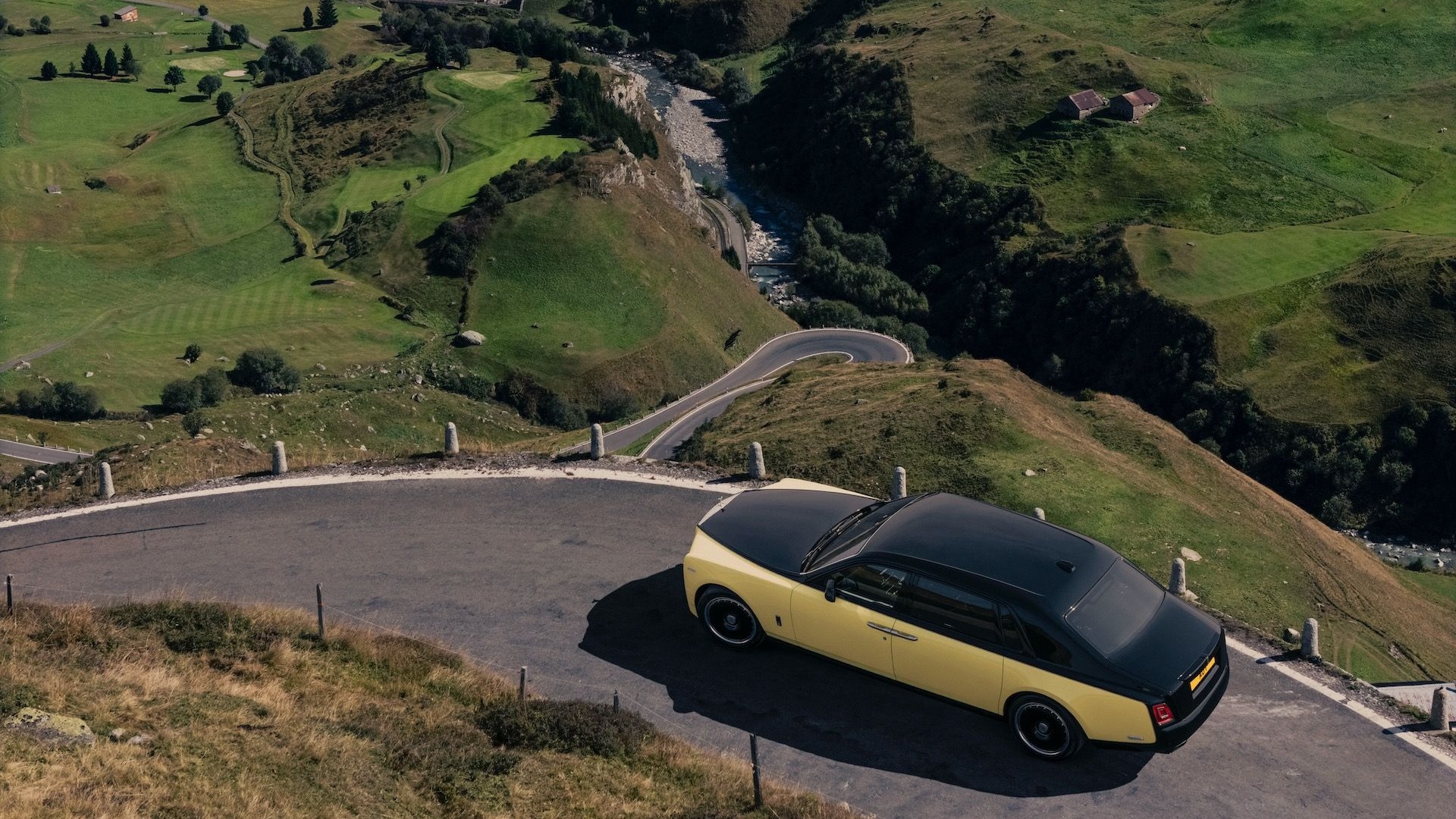- The Rolls-Royce Phantom Goldfinger features a solid 18-carat gold bar in the center console
- Movie references are littered throughout the Phantom Goldfinger's bespoke design touches
- Aston Martin also paid tribute to "Goldfinger" with a special-edition DB12
James Bond's Aston Martin DB5 rightfully gets the most attention, but it's not the only memorable car from 1964's "Goldfinger."
The counterpoint to 007's Aston was the 1937 Rolls-Royce Phantom III Sedanca de Ville of titular villain Auric Goldfinger. To commemorate the movie's 60th anniversary, Rolls-Royce built a one-off version of the current Phantom Extended Wheelbase inspired by the iconic villain car. The one-off is known as the Rolls-Royce Phantom Goldfinger.
The Phantom Goldfinger wears a similar two-tone paint scheme to the movie car, with 21-inch wheels designs to look like that car's smooth disc wheels. In the movie, the Phantom's bodywork was also made of gold being smuggled by Goldfinger. Rolls-Royce didn't go quite that far with the tribute car, but used a combination of 18-carat gold plating and coats of silver to make it appear as if the hood ornament is made of solid gold.

Rolls-Royce Phantom Goldfinger
Rolls-Royce also incorporated 18-carat and 24-carat gold throughout the interior. An 18-carat gold bar shaped like a miniature Phantom is housed in a vault in the front center console. The front- and second-row consoles are also lined with gold, as is the glovebox, which also bears one of Goldfinger's most memorable lines: "This is gold, Mr. Bond. All my life, I have been in love with its color, its brilliance, its divine heavenliness."
The Phantom also sports a 24-carat gold VIN plaque, gold-finished air vents, and gold-plated scuff plates designed to look like gold bars. Walnut picnic tables feature a 22-carat gold inlay and a fictional map of the U.S. gold depository at Fort Knox, the target of Goldfinger's heist in the movie. The rest of the interior is finished in navy leather with walnut wood veneers.
In the movie, Bond tails Goldfinger through the Furka Pass across the Swiss Alps, a scene that's referenced by a three-dimensional map of the pass in the Phantom's dashboard "gallery," and the illuminated Starlight Headliner. This features 719 light points replicating the positions of the stars over the Furka Pass on Jul. 11, 1964—the last day of "Goldfinger" filming at that location.

Rolls-Royce Phantom Goldfinger
Other movie references include a gold-plated putter mounted on the underside of the trunk lid—a nod to the first encounter between Bond and Goldfinger over a round of golf—and a fake tracking device that projects the 007 logo onto the trunk floor. The Phantom's door-mounted umbrellas also have the same design as Goldfinger's and the car wears the same license plate number as the movie version—AU1.
Like other Rolls-Royce bespoke builds, the Goldfinger Phantom won't be replicated. But the automaker's continued emphasis on bespoke work means the automaker will continue to concoct unique cars.
Aston Martin is also celebrating the 60th anniversary of "Goldfinger" with a special-edition DB12. The automaker already built a limited run of "Goldfinger" continuation DB5 models—complete with working gadgets—although they can't be driven on public roads.





